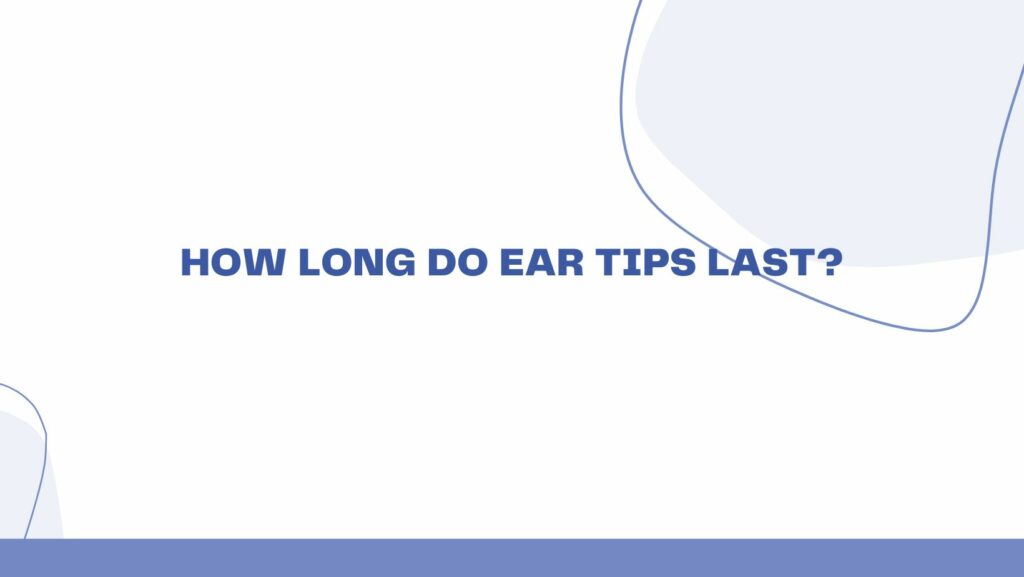As we immerse ourselves in the world of personal audio, the ear tips of our favorite earphones and in-ear monitors stand as unsung heroes, safeguarding our auditory sanctuaries. Yet, these small yet crucial components are not immune to the passage of time. The question often arises: How long do ear tips last? In this exploration, we embark on a journey to unravel the lifespan of ear tips, delving into the factors influencing their durability and offering insights to guide users in maintaining the longevity of their sonic sentinels.
Factors Influencing Ear Tip Lifespan:
- Frequency of Use: Daily Companionship: The more frequently earphones are used, the faster their ear tips may wear out. Daily use, especially for extended periods, can subject the tips to continuous compression and friction, potentially affecting their resilience over time.
- Material Composition: Silicone, Foam, or Other: The material from which the ear tips are crafted significantly impacts their lifespan. Silicone ear tips, known for their durability, may last longer compared to foam tips, which tend to compress and wear out more quickly. Memory foam tips offer a middle ground, balancing comfort and longevity.
- Maintenance Practices: Hygiene and Care: Regular cleaning and proper maintenance play a pivotal role in extending the lifespan of ear tips. Earwax, oils, and debris can accumulate on the tips, impacting both hygiene and comfort. Periodic cleaning with a gentle solution ensures optimal performance.
- Earwax Buildup: Natural Culprit: Earwax, a natural secretion produced by the ears, can accumulate on ear tips over time. The acidic nature of earwax can affect the material, leading to degradation. Regular cleaning and monitoring for signs of earwax buildup are essential.
- Environmental Conditions: Temperature and Humidity: The environment in which earphones are used can influence the lifespan of ear tips. Exposure to extreme temperatures or high humidity may accelerate wear and tear. Storing earphones in a cool, dry place can help preserve the integrity of the ear tips.
- Physical Activity: Dynamic Usage Patterns: Individuals engaged in physical activities, such as running or intense workouts, may experience faster wear on their ear tips. The movement and friction associated with dynamic activities can impact the tips’ resilience, necessitating more frequent replacements.
Signs that Ear Tips Need Replacement:
- Visible Wear and Tear: Flattening and Loss of Elasticity: If the ear tips appear flattened, lose their original shape, or exhibit signs of wear and tear, it may be an indication that replacement is necessary. Visible changes in the material’s elasticity can affect the tips’ ability to create a secure seal.
- Decreased Comfort: Discomfort During Use: A noticeable decline in comfort, such as increased pressure points or irritation, suggests that the ear tips may be losing their original softness and pliability. Uncomfortable ear tips can compromise the overall listening experience.
- Reduced Noise Isolation: Sound Leakage and Ineffective Seal: If the ear tips no longer form a secure seal in the ear canal, sound leakage may occur, diminishing the effectiveness of noise isolation. Reduced noise isolation can impact the clarity and quality of the audio.
- Hygiene Concerns: Persistent Hygiene Issues: Ear tips that are difficult to clean or exhibit persistent hygiene issues, such as an unpleasant odor, may indicate that the material has reached the end of its effective lifespan. Replacing the tips ensures a cleaner and more hygienic listening experience.
Conclusion:
The lifespan of ear tips is a nuanced interplay of various factors, each influencing the other in shaping the longevity of these small yet indispensable components. Users can proactively extend the life of their ear tips by adopting regular cleaning practices, monitoring for signs of wear, and adjusting usage patterns based on environmental conditions. Recognizing the signs that ear tips need replacement ensures that users can maintain the optimal performance of their earphones, allowing the sonic journey to continue with clarity, comfort, and an unwavering auditory experience.


